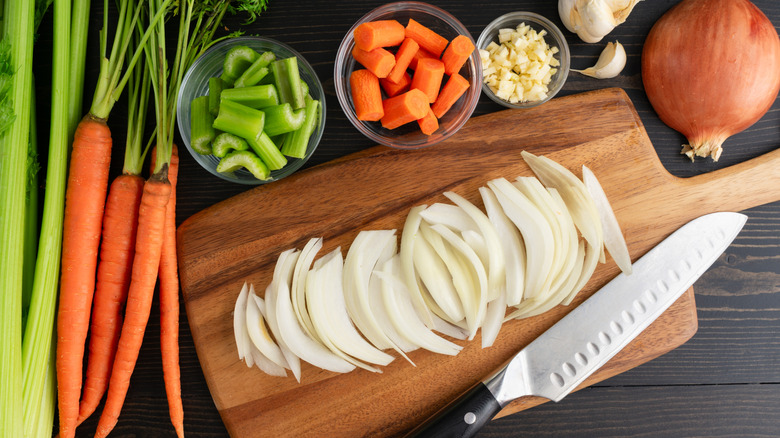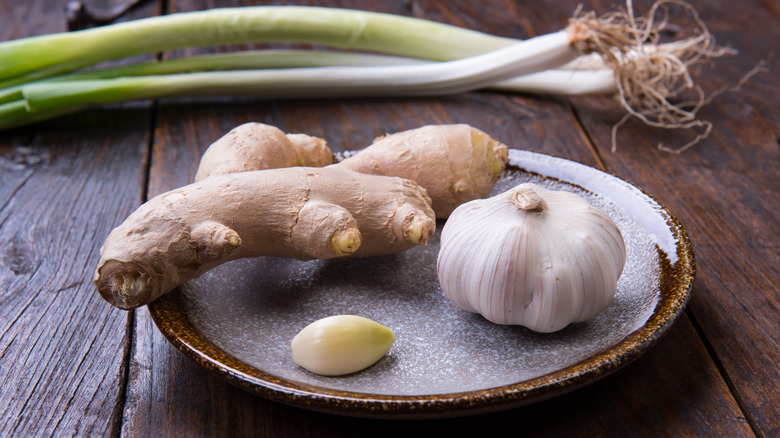How Aromatics Take Food From Fine To Five Star
When you were a child, you might have spent an idle moment reading some of your mother's recipes for soups or stews – that perfect sick day meal, chicken noodle soup, for example — with increasing confusion and even disgust. Now, you had chicken noodle soup before, but to you it was just chicken bits and noodles in a bowl of yellow stuff. So what the heck was up with all those vegetables in the list of ingredients? You can take some carrot in a pinch, but onion? Celery? Leek? Since when was there leek in chicken noodle soup? Unacceptable! Who can you sue? Well, not so fast, You From The Past: Those vegetables are actually aromatics, and serve a valuable purpose in all sorts of dishes — not only soups and stews, but braises, sauces, and stir fries, as well.
Aromatics, as the name implies, are vegetables, herbs, and spices primarily used to impart flavor and aroma in a dish without being the central focus; in fact, in some cases, you might not even eat them at all. If you're making your own chicken stock, for instance, you may throw in chopped carrots, onions, celery, leek, and garlic with the leftover rotisserie chicken carcass or bones — but these will ultimately be strained out and discarded.
If you use a good balance of aromatics, the stock won't especially taste like carrot or onion or garlic. It will, however, taste much deeper and richer than it would if you just simmered leftover poultry bones for hours.
Different cuisines use different aromatics
So what kind of vegetables will you, home cook extraordinaire, use for your aromatics? It depends on what you're making. Dishes such as soups use something called a mirepoix: a mixture of carrots, onions, and celery, chopped into small pieces and sauteed to serve as the foundation for a dish's flavor. (As with many culinary innovations, it was first popularized by the private chef of a French aristocrat.)
Many cuisines have their own equivalents. The Italians have soffritto, which is a mirepoix with the addition of garlic; the Spanish have the similar-sounding sofrito, which replaces carrots and celery with red and green bell peppers and tomato. In Cajun and Creole cuisine, the holy trinity consists of onions, green bell peppers, and celery. And many Asian cuisines use a base of garlic, ginger, and scallions, with ingredients such as chilies or lemongrass in Thai cooking, or spices such as cardamom or turmeric in Indian dishes.
The ingredients may differ, but the goal remains the same: lending flavor and richness to dishes. They will improve your stew or stir fry with their mere presence — but if you really want to get the most out of your aromatics, you would do well to saute them. Sweating your vegetables will help to release their essential flavors, giving the dish a richer and more complex taste that will always be welcome.

